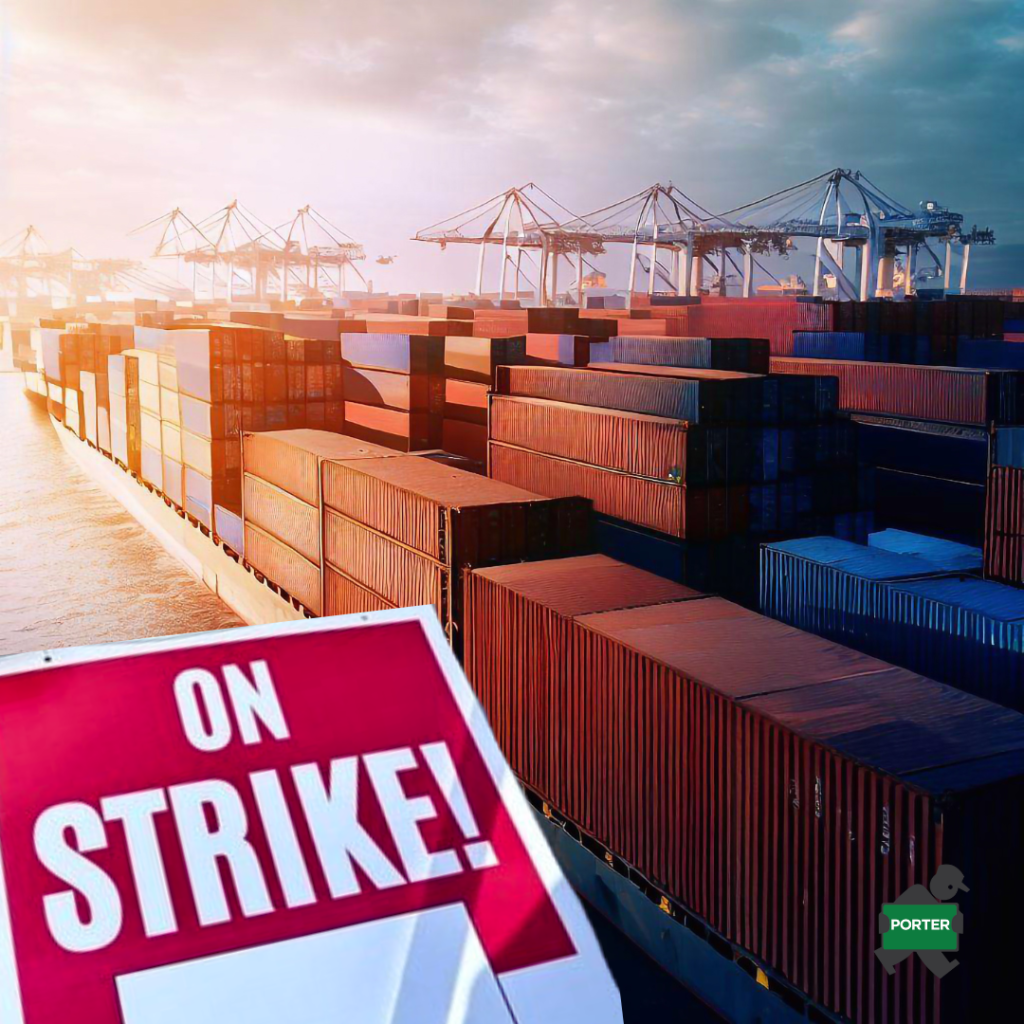
The potential disruptions looming for the U.S. supply chain due to a dockworkers’ strike at East and Gulf Coast ports are the largest since the 2020-2022 COVID-19 pandemic. Negotiations between the International Longshoremen’s Association (ILA) and the United States Maritime Alliance (USMX) have reached a deadlock. With the current labor agreement set to expire on September 30, a strike could begin as early as October 1. This would affect 43% of U.S. imports, leading to significant delays, higher shipping costs, and disruptions across industries relying on these ports.
Efforts from the Biden administration to encourage both sides to negotiate in good faith are ongoing, but there are no plans to intervene using the Taft-Hartley Act, which could temporarily halt the strike. If the strike goes ahead, the economic impact could be staggering, with estimates of losses reaching up to $5 billion per day. Companies, including those in the 3PL industry like Porter Logistics, should consider alternative transportation routes and preemptive measures to mitigate the effects of potential delays.
For Porter Logistics, staying prepared with contingency plans, such as diverting shipments to West Coast ports or adjusting inventory levels, will be essential to maintain service levels during this period.